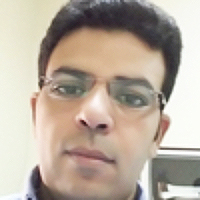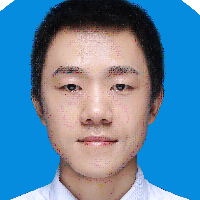Abstract
Literature Review
The Effect of Shoulder Immobilization Position on Outcomes Following Rotator Cuff Repair: A Scoping Review
Ujash Sheth*, James Lee, Diane Nam and Patrick Henry
Published: 20 August, 2024 | Volume 9 - Issue 3 | Pages: 060-067
Introduction: There has been growing interest in determining the influence of post-operative immobilization posture and rehabilitation protocol on healing rates and clinical outcomes. Current consensus calls for the use of an immobilization device post-operatively, which commonly comes in the form of a standard sling or an abduction brace with the arm positioned in varying degrees of abduction. There is a lack of high-level evidence in the literature to recommend one type of immobilization device or arm position over another.
Objectives: This study aimed to summarize the current clinical and biomechanical evidence for the optimal postoperative positioning and bracing of the arm following arthroscopic rotator cuff repair.
Methods: A comprehensive search of the electronic databases EMBASE, MEDLINE, and PubMed was performed using a combination of the following keywords and medical subject heading (MeSH) terms: ‘arthroscopic’, ‘rotator cuff repair’, ‘sling’, ‘brace’ and ‘immobilization’. This systematic review was conducted following the Preferred Reporting for Systematic Reviews and Meta-analysis (PRIMSA) guidelines. Two reviewers performed an independent assessment of the methodological quality of each eligible clinical study using the Methodological Index for Non-Randomized Studies (MINORS).
Results: Based on current biomechanical evidence, placement of the arm into an abducted position following rotator cuff repair was found to be favorable. An abduction angle of 30° was associated with lower strain on the repair while maintaining appropriate contact pressure at the footprint. However, the use of an abduction brace did not result in a clinically significant improvement in long-term PROM, ROM, and re-tear rates when compared to a traditional sling in clinical studies.
Conclusion: Despite observing favorable outcomes with abduction bracing after rotator cuff repair in biomechanical studies these findings were not reproduced in clinical studies. However, current clinical studies are comprised of small sample sizes, varying tear sizes, and significant heterogeneity in both, the degree of abduction and forearm rotation. Future studies should be directed towards prospectively investigating the effect of immobilization position among patients with similar rotator cuff tear sizes.
Read Full Article HTML DOI: 10.29328/journal.jsmt.1001084 Cite this Article Read Full Article PDF
Keywords:
Abduction brace; Sling; Rotator cuff repair
References
- Largacha M, Parsons IM, Campbell B, Titelman RM, Smith KL, Matsen F 3rd. Deficits in shoulder function and general health associated with sixteen common shoulder diagnoses: a study of 2674 patients. J Shoulder Elbow Surg. 2006;15:30-39. Available from: https://doi.org/10.1016/j.jse.2005.04.006
- Flatow EL, Soslowsky LJ, Ticker JB, Pawluk RJ, Hepler M, Ark J, et al. Excursion of the rotator cuff under the acromion. Patterns of subacromial contact. Am J Sports Med. 1994;22:779-788. Available from: https://doi.org/10.1177/036354659402200609
- Yamamoto A, Takagishi K, Osawa T, Yanagawa T, Nakajima D, Shitara H, Prevalence and risk factors of a rotator cuff tear in the general population. J Shoulder Elbow Surg. 2010;19:116-120. Available from: https://doi.org/10.1016/j.jse.2009.04.006
- Tempelhof S, Rupp S, Seil R. Age-related prevalence of rotator cuff tears in asymptomatic shoulders. J Shoulder Elbow Surg. 1999;8:296-299. Available from: https://doi.org/10.1016/s1058-2746(99)90148-9
- Chang KV, Hung CY, Han DS, Chen WS, Wang TG, Chien KL. Early versus delayed passive range of motion exercise for arthroscopic rotator cuff repair: a meta-analysis of randomized controlled trials. Am J Sports Med. 2015;43:1265-1273. Available from: https://doi.org/10.1177/0363546514544698
- Kim YS, Chung SW, Kim JY, Ok JH, Park I, Oh JH. Is early passive motion exercise necessary after arthroscopic rotator cuff repair? Am J Sports Med. 2012;40:815-21. Available from: https://doi.org/10.1177/0363546511434287
- Keener JD, Galatz LM, Stobbs-Cucchi G, Patton R, Yamaguchi K. Rehabilitation following arthroscopic rotator cuff repair: a prospective randomized trial of immobilization compared with early motion. J Bone Joint Surg Am. 2014;96:11-19. Available from: https://doi.org/10.2106/jbjs.m.00034
- Tashjian RZ, Hollins AM, Kim HM, Teefey SA, Middleton WD, Steger-May K, et al. Factors affecting healing rates after arthroscopic double-row rotator cuff repair. Am J Sports Med. 2010;38:2435-2442. Available from: https://doi.org/10.1177/0363546510382835
- Slabaugh MA, Nho SJ, Grumet RC, Wilson JB, Seroyer ST, Frank RM, et al. Does the literature confirm superior clinical results in radiographically healed rotator cuffs after rotator cuff repair? Arthroscopy. 2010;26:393-403. Available from: https://doi.org/10.1016/j.arthro.2009.07.023
- Galatz LM, Ball CM, Teefey SA, Middleton WD, Yamaguchi K. The outcome and repair integrity of completely arthroscopically repaired large and massive rotator cuff tears. J Bone Joint Surg Am. 2004;86:219-224. Available from: https://doi.org/10.2106/00004623-200402000-00002
- Riboh JC, Garrigues GE. Early passive motion versus immobilization after arthroscopic rotator cuff repair. Arthroscopy. 2014;30:997-1005. Available from: https://doi.org/10.1016/j.arthro.2014.03.012
- Thomopoulos S, Williams GR, Soslowsky LJ. Tendon to bone healing: differences in biomechanical, structural, and compositional properties due to a range of activity levels. J Biomech Eng. 2003;125:106-113. Available from: https://doi.org/10.1115/1.1536660
- Sonnabend DH, Howlett CR, Young AA. Histological evaluation of repair of the rotator cuff in a primate model. J Bone Joint Surg Br. 2010;92:586-594. Available from: https://doi.org/10.1302/0301-620x.92b4.22371
- Parsons BO, Gruson KI, Chen DD, Harrison AK, Gladstone J, Flatow EL. Does slower rehabilitation after arthroscopic rotator cuff repair lead to long-term stiffness? J Shoulder Elbow Surg. 2010;19:1034-1039. Available from: https://doi.org/10.1016/j.jse.2010.04.006
- Sheps DM, Silveira A, Beaupre L, Styles-Tripp F, Balyk R, Lalani A, Glasgow R, et al. Early active motion versus sling immobilization after arthroscopic rotator cuff repair: a randomized controlled trial. Arthroscopy. 2019;35:749-60.e2. Available from: https://doi.org/10.1016/j.arthro.2018.10.139
- Arndt J, Clavert P, Mielcarek P, Bouchaib J, Meyer N, Kempf JF. Immediate passive motion versus immobilization after endoscopic supraspinatus tendon repair: a prospective randomized study. Orthop Traumatol Surg Res. 2012;98. Available from: https://doi.org/10.1016/j.otsr.2012.05.003
- Jenssen KK, Lundgreen K, Madsen JE, Kvakestad R, Pripp AH, Dimmen S. No functional difference between three and six weeks of immobilization after arthroscopic rotator cuff repair: a prospective randomized controlled non-inferiority trial. Arthroscopy. 2018;34:2765-2774. Available from: https://doi.org/10.1016/j.arthro.2018.05.036
- Tirefort J, Schwitzguebel AJ, Collin P, Nowak A, Plomb-Holmes C, Lädermann A. Postoperative mobilization after superior rotator cuff repair: sling versus no sling: a randomized prospective study. J Bone Joint Surg Am. 2019;101:494-503. Available from: https://doi.org/10.2106/jbjs.18.00773
- Cuff DJ, Pupello DR. Prospective randomized study of arthroscopic rotator cuff repair using an early versus delayed postoperative physical therapy protocol. J Shoulder Elbow Surg. 2012;21:1450-1455. Available from: https://doi.org/10.1016/j.jse.2012.01.025
- Lee BG, Cho NS, Rhee YG. Effect of two rehabilitation protocols on range of motion and healing rates after arthroscopic rotator cuff repair: aggressive versus limited early passive exercises. Arthroscopy. 2012;28:34-42. Available from: https://doi.org/10.1016/j.arthro.2011.07.012
- Pedowitz RA, Yamaguchi K, Ahmad CS, Burks RT, Flatow EL, Green A, et al. Optimizing the management of rotator cuff problems. J Am Acad Orthop Surg. 2011;19:368-379. Available from: https://doi.org/10.5435/00124635-201106000-00007
- Moher D, Liberati A, Tetzlaff J, Altman DG. Preferred reporting items for systematic reviews and meta-analyses: the PRISMA statement. BMJ. 2009;339. Available from: https://doi.org/10.1371/journal.pmed.1000097
- Slim K, Nini E, Forestier D, Panis Y, Chipponi J. Methodological index for non-randomized studies (MINORS): development and validation of a new instrument. ANZ J Surg. 2003;73:712-716. Available from: https://doi.org/10.1046/j.1445-2197.2003.02748.x
- Zuckerman JD, Leblanc JM, Choueka J, Kummer F. The effect of arm position and capsular release on rotator cuff repair: a biomechanical study. J Bone Joint Surg Br. 1991;73:402-405. Available from: https://doi.org/10.1302/0301-620x.73b3.1670437
- Hatakeyama Y, Itoi E, Pradhan RL, Urayama M, Sato K. Effect of arm elevation and rotation on the strain in the repaired rotator cuff tendon: a cadaveric study. Am J Sports Med. 2001;29:788-794. Available from: https://doi.org/10.1177/03635465010290061901
- Reilly P, Bull AM, Amis AA, Wallace AL, Richards A, Hill AM, et al. Passive tension and gap formation of rotator cuff repairs. J Shoulder Elbow Surg. 2004;13:664-667. Available from: https://doi.org/10.1016/j.jse.2004.03.011
- Andarawis-Puri N, Kuntz AF, Ramsey ML, Soslowsky LJ. Effect of glenohumeral abduction angle on the mechanical interaction between the supraspinatus and infraspinatus tendons for the intact, partial-thickness torn, and repaired supraspinatus tendon conditions. J Orthop Res. 2010;28:846-851. Available from: https://doi.org/10.1002/jor.21068
- Howe C, Huber P, Wolf FM, Matsen F 3rd. Differential suture loading in an experimental rotator cuff repair. Am J Sports Med. 2009;37:324-329. Available from: https://doi.org/10.1177/0363546508324308
- Hawthorne JR, Carpenter EM, Lam PH, Murrell GAC. Effects of abduction pillows on rotator cuff repair: a biomechanical analysis. HSS J. 2018;14:114-122. Available from: https://doi.org/10.1007/s11420-017-9592-2
- Jackson M, Tétreault P, Allard P, Begon M. Optimal shoulder immobilization postures following surgical repair of rotator cuff tears: a simulation analysis. J Shoulder Elbow Surg. 2013;22:1011-1018. Available from: https://doi.org/10.1016/j.jse.2012.10.042
- Saul KR, Hayon S, Smith TL, Tuohy CJ, Mannava S. Postural dependence of passive tension in the supraspinatus following rotator cuff repair: a simulation analysis. Clin Biomech (Bristol, Avon). 2011;26:804-810. Available from: https://doi.org/10.1016/j.clinbiomech.2011.04.005
- Conti M, Garofalo R, Castagna A. Does a brace influence clinical outcomes after arthroscopic rotator cuff repair? Musculoskelet Surg. 2015;99 Suppl 1. Available from: https://doi.org/10.1007/s12306-015-0357-0
- Silverio LM, Cheung EV. Patient adherence with postoperative restrictions after rotator cuff repair. J Shoulder Elbow Surg. 2014;23:508-513. Available from: https://doi.org/10.1016/j.jse.2013.09.018
- Hollman F, Wolterbeek N, Zijl JAC, van Egeraat SPM, Wessel RN. Abduction brace versus antirotation sling after arthroscopic cuff repair: the effects on pain and function. Arthroscopy. 2017;33:1618-1626. Available from: https://doi.org/10.1016/j.arthro.2017.02.010
- McColl AH, Lam PH, Murrell GAC. Are we getting any better? A study on repair integrity in 1600 consecutive arthroscopic rotator cuff repairs. JSES Open Access. 2019;3:12-20. Available from: https://doi.org/10.1016%2Fj.jses.2019.01.002
- Ghandour TM, Ibrahim A, Abdelrahman AA, Elgammal A, Hammad MH. Does the type of shoulder brace affect postoperative pain and clinical outcome after arthroscopic rotator cuff repair? Arthroscopy. 2019;35:1016-1023. Available from: https://doi.org/10.1016/j.arthro.2018.10.137
- Pandey V, Madi S, Maddukuri S, Acharya K, Karegowda LH, Willems WJ. Does application of abduction brace after arthroscopic rotator cuff repair improve blood flow around posterosuperior rotator cuff and repair site, affecting pain levels and clinical and structural outcomes? A pilot randomized controlled trial. JSES Int. 2020;4:848-859. Available from: https://doi.org/10.1016%2Fj.jseint.2020.07.021
- Park MC, Pirolo JM, Park CJ, Tibone JE, McGarry MH, Lee TQ. The effect of abduction and rotation on footprint contact for single-row, double-row, and modified double-row rotator cuff repair techniques. Am J Sports Med. 2009;37:1599-608. Available from: https://doi.org/10.1177/0363546509332506
- Morton A, Riddle R, Buchanan R, Katz D, Birch J. Accuracy in the prediction and estimation of adherence to bracewear before and during treatment of adolescent idiopathic scoliosis. J Pediatr Orthop. 2008;28:336-341. Available from: https://doi.org/10.1097/bpo.0b013e318168d154
- Duivenvoorden T, van Raaij TM, Horemans HL, Brouwer RW, Bos PK, Bierma-Zeinstra SM, et al. Do laterally wedged insoles or valgus braces unload the medial compartment of the knee in patients with osteoarthritis? Clin Orthop Relat Res. 2015;473:265-274. Available from: https://doi.org/10.1007%2Fs11999-014-3947-5
- Grubhofer F, Catanzaro S, Schöpbach R, Imam MA, Wirth S. Compressive stockings after hindfoot and ankle surgery. Foot Ankle Int. 2018;39:210-218. Available from: https://doi.org/10.1177/1071100717737518
- Takemitsu M, Bowen JR, Rahman T, Glutting JJ, Scott CB. Compliance monitoring of brace treatment for patients with idiopathic scoliosis. Spine (Phila Pa 1976). 2004;29:2070-2074; discussion 2074. Available from: https://doi.org/10.1097/01.brs.0000138280.43663.7b
- Raju S, Lurie F, O’Donnell TF. Compression use in the era of endovenous interventions and wound care centers. J Vasc Surg Venous Lymphat Disord. 2016;4:346-354. Available from: https://doi.org/10.1016/j.jvsv.2015.11.001
Figures:
Similar Articles
-
The Effect of Shoulder Immobilization Position on Outcomes Following Rotator Cuff Repair: A Scoping ReviewUjash Sheth*, James Lee, Diane Nam, Patrick Henry. The Effect of Shoulder Immobilization Position on Outcomes Following Rotator Cuff Repair: A Scoping Review. . 2024 doi: 10.29328/journal.jsmt.1001084; 9: 060-067
Recently Viewed
-
Trends in TeledentistryRudrakshi C*. Trends in Teledentistry. J Clin Adv Dent. 2020: doi: 10.29328/journal.jcad.1001014; 4: 004-005
-
Au26-35: A Special Geometrical Structure of Au33 (D2) Cluster with Highly Occupied - 14 Pairs of Double-State DegeneracyK Vishwanathan*. Au26-35: A Special Geometrical Structure of Au33 (D2) Cluster with Highly Occupied - 14 Pairs of Double-State Degeneracy. Ann Adv Chem. 2022: doi: 10.29328/journal.aac.1001035; 6: 063-080
-
Texture of Thin Films of Aluminum Nitride Produced by Magnetron SputteringStrunin Vladimir Ivanovich,Baranova Larisa Vasilievna*,Baisova Bibigul Tulegenovna. Texture of Thin Films of Aluminum Nitride Produced by Magnetron Sputtering. Int J Phys Res Appl. 2025: doi: 10.29328/journal.ijpra.1001106; 8: 013-016
-
Minimising Carbon Footprint in Anaesthesia PracticeNisha Gandhi and Abinav Sarvesh SPS*. Minimising Carbon Footprint in Anaesthesia Practice. Int J Clin Anesth Res. 2024: doi: 10.29328/journal.ijcar.1001025; 8: 005-007
-
On Friedman equation, quadratic laws and the geometry of our universeS Kalimuthu*. On Friedman equation, quadratic laws and the geometry of our universe. Int J Phys Res Appl. 2021: doi: 10.29328/journal.ijpra.1001041; 4: 048-050
Most Viewed
-
Evaluation of Biostimulants Based on Recovered Protein Hydrolysates from Animal By-products as Plant Growth EnhancersH Pérez-Aguilar*, M Lacruz-Asaro, F Arán-Ais. Evaluation of Biostimulants Based on Recovered Protein Hydrolysates from Animal By-products as Plant Growth Enhancers. J Plant Sci Phytopathol. 2023 doi: 10.29328/journal.jpsp.1001104; 7: 042-047
-
Sinonasal Myxoma Extending into the Orbit in a 4-Year Old: A Case PresentationJulian A Purrinos*, Ramzi Younis. Sinonasal Myxoma Extending into the Orbit in a 4-Year Old: A Case Presentation. Arch Case Rep. 2024 doi: 10.29328/journal.acr.1001099; 8: 075-077
-
Feasibility study of magnetic sensing for detecting single-neuron action potentialsDenis Tonini,Kai Wu,Renata Saha,Jian-Ping Wang*. Feasibility study of magnetic sensing for detecting single-neuron action potentials. Ann Biomed Sci Eng. 2022 doi: 10.29328/journal.abse.1001018; 6: 019-029
-
Pediatric Dysgerminoma: Unveiling a Rare Ovarian TumorFaten Limaiem*, Khalil Saffar, Ahmed Halouani. Pediatric Dysgerminoma: Unveiling a Rare Ovarian Tumor. Arch Case Rep. 2024 doi: 10.29328/journal.acr.1001087; 8: 010-013
-
Physical activity can change the physiological and psychological circumstances during COVID-19 pandemic: A narrative reviewKhashayar Maroufi*. Physical activity can change the physiological and psychological circumstances during COVID-19 pandemic: A narrative review. J Sports Med Ther. 2021 doi: 10.29328/journal.jsmt.1001051; 6: 001-007

HSPI: We're glad you're here. Please click "create a new Query" if you are a new visitor to our website and need further information from us.
If you are already a member of our network and need to keep track of any developments regarding a question you have already submitted, click "take me to my Query."



















































































































































